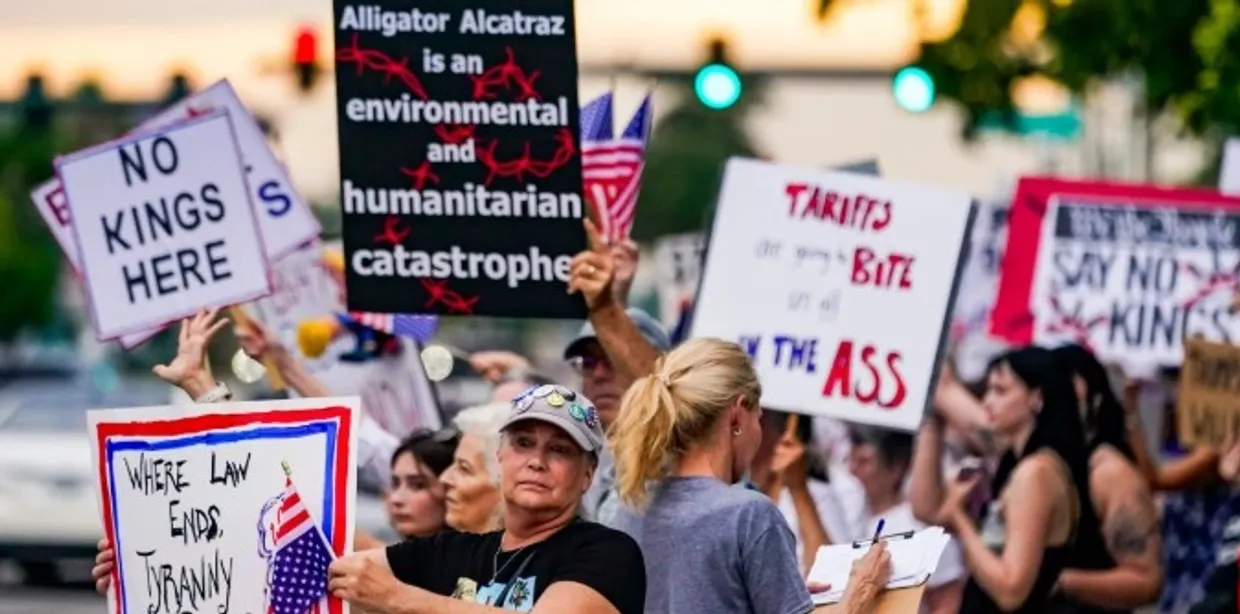“Good Trouble” Protests Draw Demonstrators in Over 280 U.S. Cities
By: D. D. Reese
Published July 20, 2025
Tens of thousands of demonstrators participated in coordinated “Good Trouble” protests across more than 280 cities in the United States on Wednesday, July 17. The events, organized by a coalition of civil rights groups, community organizers, and grassroots activists, called attention to a range of social justice concerns, including immigration enforcement practices, voting rights, and racial equity.
The movement, named in honor of the late Congressman and civil rights leader John Lewis, who famously encouraged people to get into “good trouble” in the pursuit of justice, has grown into an annual day of action in cities both large and small.
Protesters marched peacefully in major urban centers such as New York, Chicago, Los Angeles, and Atlanta, as well as in smaller towns across the South, Midwest, and Pacific Northwest. Demonstrations included rallies, prayer vigils, youth-led teach-ins, and coordinated sit-ins outside government buildings.
One central theme of the 2025 protests was opposition to recent immigration enforcement actions and policies carried out by U.S. Immigration and Customs Enforcement (ICE). Organizers expressed concern over reports of family separations, workplace raids, and the detention of asylum seekers. Banners and chants called for alternatives to detention and reforms to the immigration system.
In addition to immigration-related concerns, protestors voiced broader demands for improved access to voting, investments in underserved communities, and criminal justice reform. In some cities, speakers highlighted local concerns such as housing affordability, healthcare access, and educational equity.
“People from all walks of life are here because they want to see change, real, lasting change,” said Mariah Glenn, a youth organizer in Detroit. “This is about standing up for dignity, fairness, and equal protection under the law.”
Law enforcement agencies across the country reported that the protests were largely peaceful, with only minor disruptions or arrests in a few isolated incidents. Police departments in several cities worked with organizers to coordinate routes and provide safety measures for participants.
In Washington, D.C., a group of faith leaders and veterans led a march from the National Mall to the U.S. Capitol. Participants carried photos of civil rights icons and held signs bearing quotes from Congressman Lewis, Martin Luther King Jr., and other historical figures.
White House officials did not comment directly on the protests but reiterated the administration’s commitment to upholding the rule of law and engaging with communities on policy issues. Members of Congress from both major parties acknowledged the demonstrations, with some noting the importance of peaceful protest in a democratic society.
The 2025 “Good Trouble” protests follow a tradition of civic engagement that has continued to evolve in recent years. Organizers say they plan to keep the momentum going with town halls, voter registration drives, and community outreach events throughout the remainder of the year.
Observers say the size and scope of the protests reflect the enduring role of public demonstration in shaping the national conversation on civil rights and social equity. While the movement encompasses a wide range of issues and perspectives, its central message, organizers say, remains rooted in nonviolent action and democratic participation.
